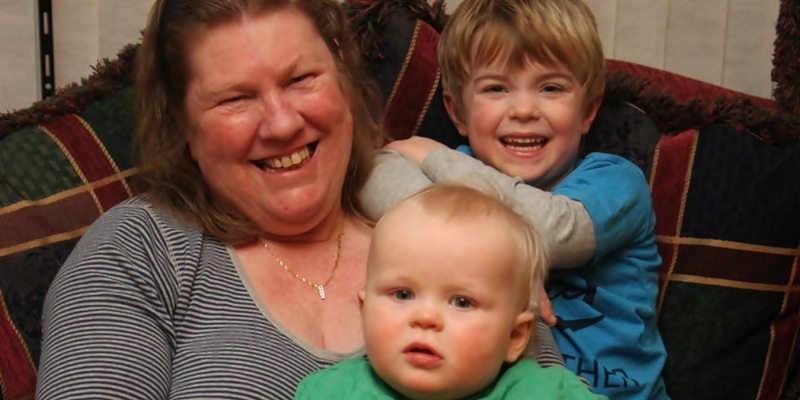An Arbroath grandmother has told how a terrifying flesh-eating bug has left her arm looking like she was attacked by a shark.
The damage to Mrs Mann’s arm.
Sandra Mann (52) says she is telling her story and showing her wound (see below) because she wants to raise awareness of the necrotising fasciitis bug.
Sandra still attends outpatient clinics at Ninewells Hospital in Dundee and wears pressure garments to reduce swelling in her right arm, months after a doctor recognised she was dangerously ill with the flesh-eating bug and took steps to save her life.
She says she looks like she has been attacked by a shark and will never have a fully functioning right arm, after contracting the potentially lethal infection.
“My arm looks as if a shark has come and taken a great big bite out of it,” said Sandra.
She admits there are times when she cannot bear to look at her arm, repulsed by the limb from which a surgeon cut away swathes of dead flesh.
“I have to keep reminding myself they did say I was lucky,” said Sandra. “I don’t always feel it.”
The mother of two adult sons and a daughter was just hours away from losing her life when a young doctor recognised her condition and sought more senior help. A surgeon and anaesthetist were called in from home on a Sunday to respond to the emergency.
Sandra was barely aware of what was happening and it was her husband Dave, who watched his wife’s arm turn black, who was told only drastic surgery would give her a chance.Mrs Mann has given The Courier permission to show the damage caused to her arm. Please be aware that it is a graphic image that may cause upset. If you wish to see it, please click here or select Page 2 below.”It was very, very close,” he said. “I almost lost her. A few hours later (without surgical intervention) and we would have lost her.”
He said that, with hindsight, there were signs to suggest his wife had been infected with the bug. However, he sympathised with the doctors who did not realise this sooner.
“It started with diarrhoea and vomiting,” he said. “We’d had an Indian meal and the first doctor (called to the home) treated her for gastroenteritis. A few hours later I called the doctor back and realised there was something seriously wrong.
“She was complaining about pain in her elbow and was sent to Ninewells. Overnight it got worse and worse and started to turn black. It advanced so rapidly, it was scary.”
He said a surgeon carried out an exploratory operation on the ward and visually confirmed necrotising fasciitis. Half an hour later, Sandra was in theatre having a whole section of her arm cut away flesh and muscle. She was in hospital for two weeks and was given extensive skin grafts, which require regular attention.
After discussion with the medical team, the belief is that the devastating bug entered her system through a cut in her finger, probably from something as simple as a weeding injury. Sandra also has multiple sclerosis, a condition that compromises her immune system, leaving her more vulnerable to infection.
“I was doing some weeding in the garden a couple of days before all this started,” said Sandra. “I got a little cut on my finger and I think some dirt got into it and that is where the infection has taken off. That is what the doctors reckon.”
Sandra hopes that telling her story will increase awareness of necrotising fasciitis.
“People need to know about it,” she said. “None of the doctors who came to see me at home recognised it.”
But she said once the condition was spotted, she got a lot of help at Ninewells and is grateful for the continuing assistance.
Continued…
